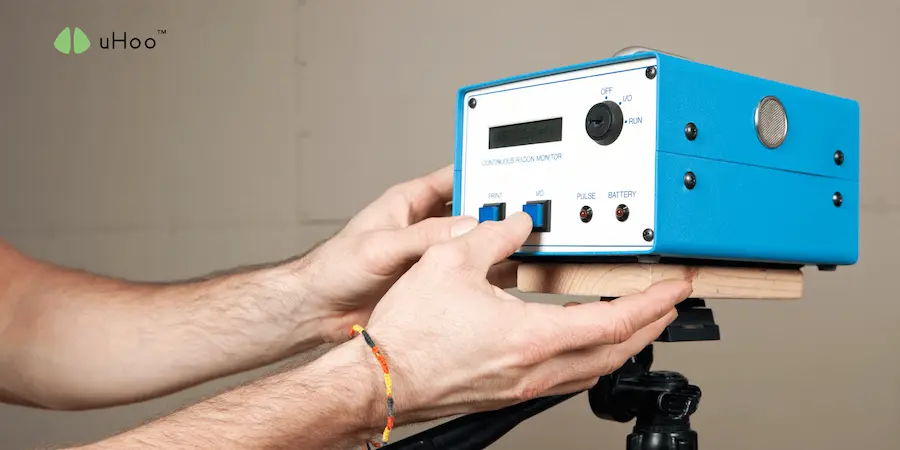Did you know that one of the most insidious threats to indoor air quality is entirely invisible, odorless, and tasteless? It’s radon gas. This naturally occurring radioactive gas is the leading cause of lung cancer among non-smokers and poses a significant risk in homes across the globe. This is why a dedicated radon detector isn’t just a good idea. It’s your crucial first line of defense for truly healthy indoor air.
What is Radon and Why is it Dangerous?
Radon is a naturally occurring radioactive gas formed from the breakdown of uranium in soil, rock, and water. It seeps up through the ground and can enter homes through cracks in foundations, floor drains, sump pits, and other openings. Once inside, it can accumulate to dangerous levels.
The danger of radon lies in its radioactivity. As radon decays, it releases tiny radioactive particles that, when inhaled, can damage the cells lining the lungs. This damage can lead to lung cancer over time. The Environmental Protection Agency (EPA) estimates that radon causes about 21,000 lung cancer deaths per year in the United States alone. What makes it particularly alarming is that you won’t know it’s there without testing.
Why Every Home Needs a Radon Detector
Given the silent and serious nature of this threat, a radon detector is not just a recommendation; it’s a necessity for any homeowner concerned about the health of their family. Here’s why it’s your first line of defense:
- You Can’t See, Smell, or Taste It: Unlike other pollutants that might give subtle clues, radon offers no sensory warnings. A detector is the only way to know if your home has elevated levels.
- Widespread Risk: Radon can be found in any home, new or old, with or without a basement, and in any part of the country. Neighboring homes can have vastly different radon levels.
- Long-Term Exposure is the Danger: While short-term exposure isn’t ideal, it’s chronic, long-term exposure to elevated radon levels that significantly increases lung cancer risk. Continuous monitoring allows you to understand your home’s average radon concentration over time.
- Actionable Insights: If a radon detector reveals high levels, it’s not a cause for panic, but a clear call to action. Mitigation techniques are highly effective at reducing radon concentrations, often by sealing entry points and improving ventilation.
What to Look for in a Radon Detector
When choosing a radon detector, consider options that offer:
- Continuous Monitoring: Unlike short-term test kits that give a snapshot, continuous monitors provide ongoing readings, giving you a better understanding of fluctuations in your home’s radon levels.
- Digital Readout: Easy-to-read digital displays allow you to see results quickly.
- Alerts: Some detectors can alert you if radon levels reach a dangerous threshold.
While a Radon Detector is Great, a uHoo Air Quality Monitor is Better
Having a dedicated radon detector is an excellent starting point and a critical tool for identifying a serious, invisible threat. It empowers you to take specific action to mitigate radon levels and protect your family’s health.
However, consider that radon is just one piece of the complex puzzle that is indoor air quality. While a radon detector focuses solely on this specific gas, a uHoo air quality monitor offers a far more comprehensive and integrated approach to understanding and managing your home’s air. A uHoo not only measures radon, but also tracks a wide array of other crucial indoor air pollutants, including:
- Temperature and Humidity: Crucial for comfort and preventing mold/dust mite growth.
- Particulate Matter (PM2.5): Microscopic particles from dust, pollen, and pollution that can penetrate deep into your lungs.
- Volatile Organic Compounds (VOCs): Chemicals off-gassed from furniture, cleaning products, and paints.
- Carbon Dioxide (CO2): An indicator of ventilation quality and occupant density.
- Carbon Monoxide (CO): A dangerous, odorless gas.
- Nitrogen Dioxide (NO2): From gas stoves and combustion sources.
- Ozone (O3): A respiratory irritant.
By providing a holistic view of your indoor air, a uHoo air quality monitor allows you to identify multiple potential issues simultaneously, giving you a more complete picture of your home’s health. It empowers you to create a truly healthy indoor environment, addressing not just the critical risk of radon, but all the factors that contribute to the purity and safety of the air you breathe every day.



